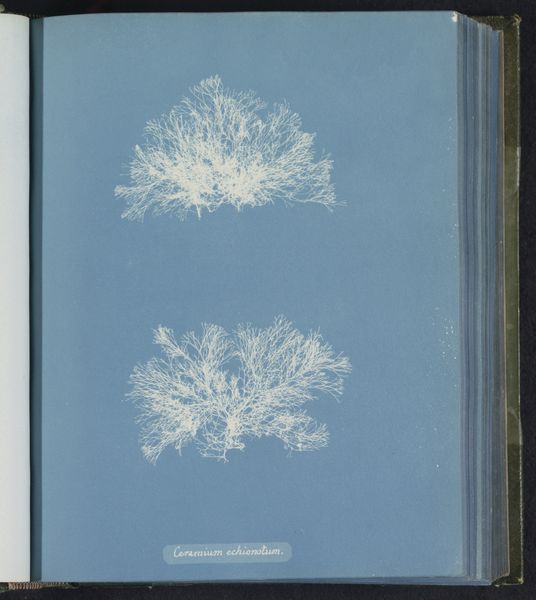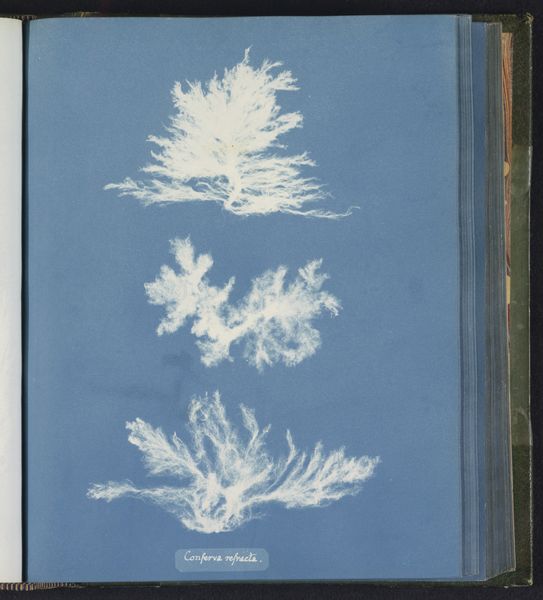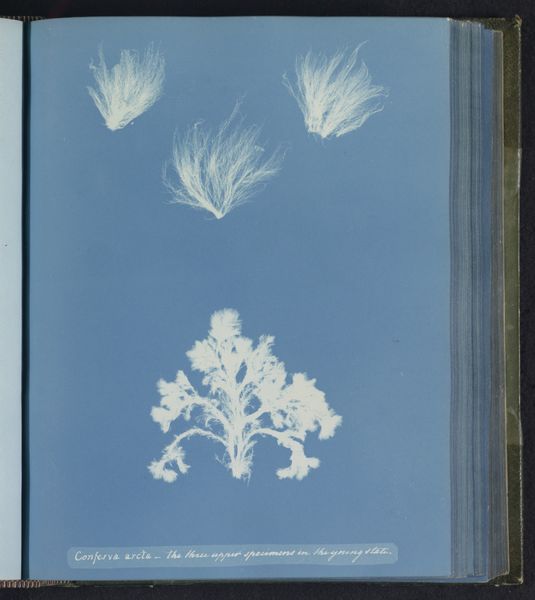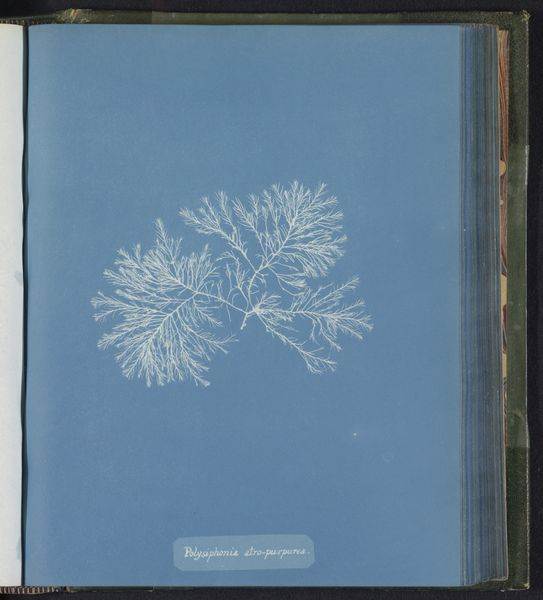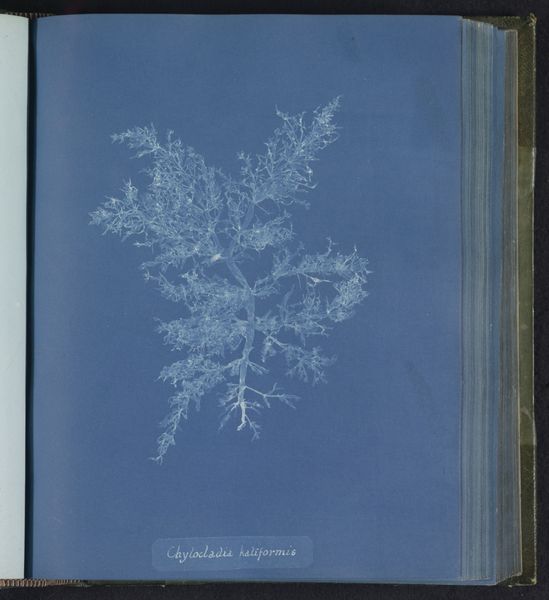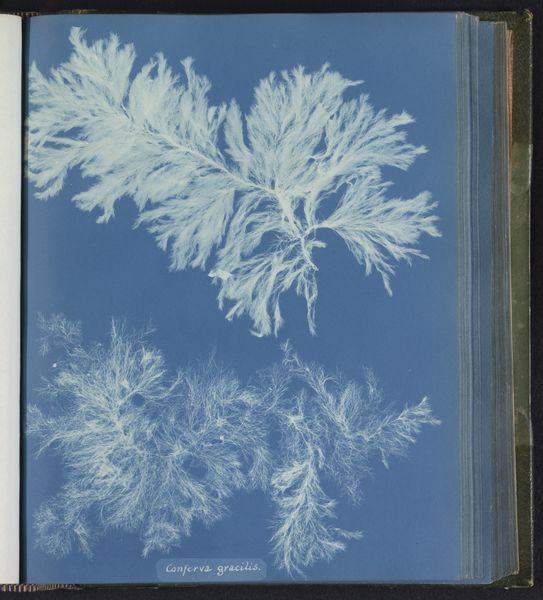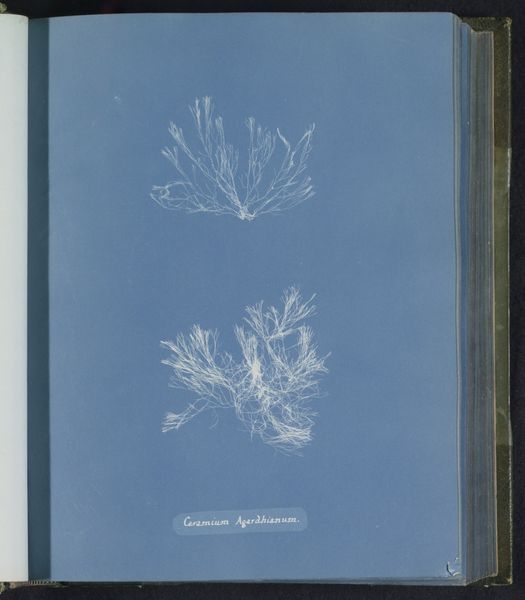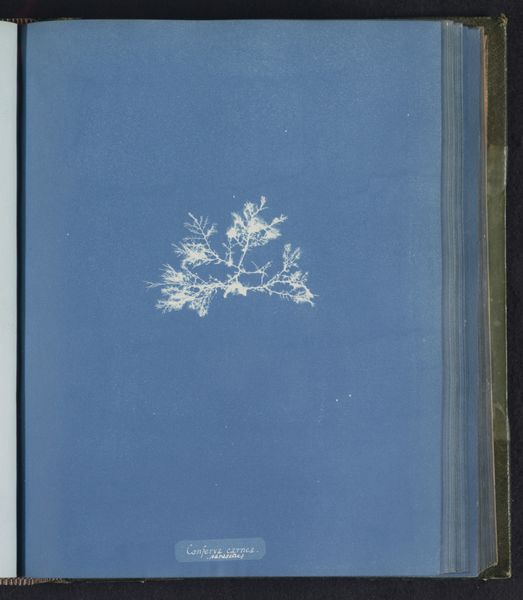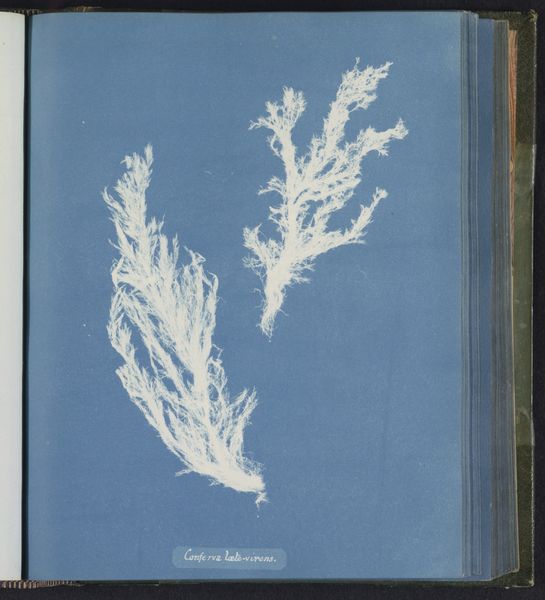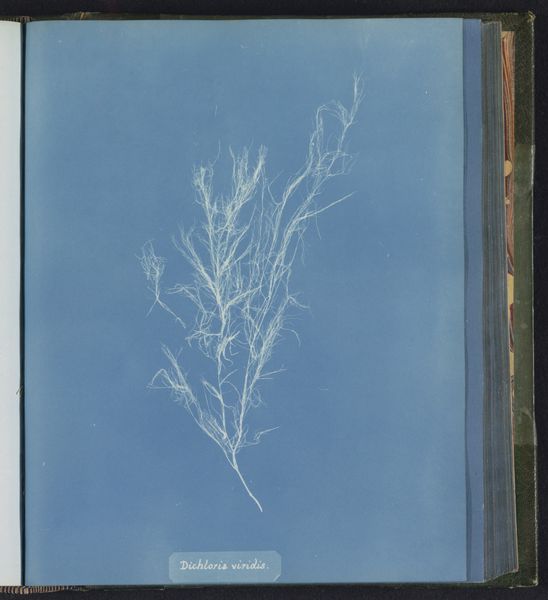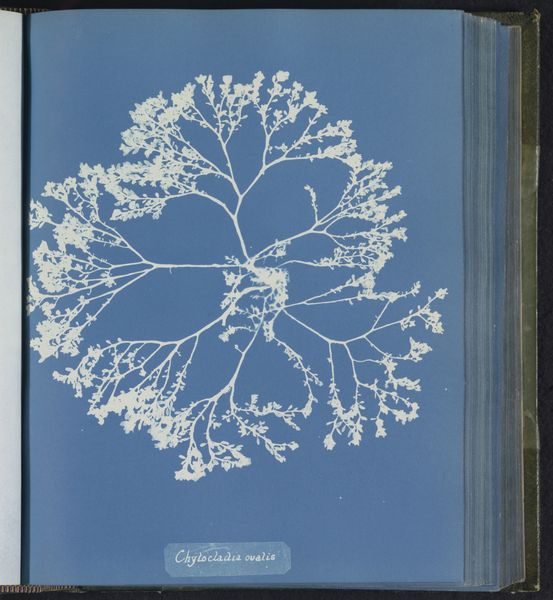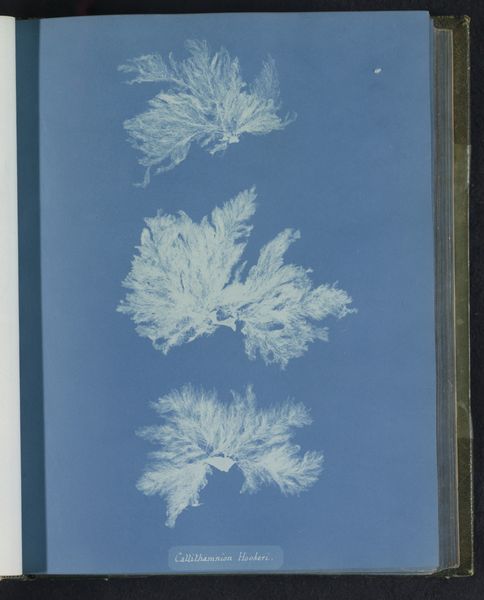
print, cyanotype, photography
#
aged paper
# print
#
personal journal design
#
cyanotype
#
photography
#
personal sketchbook
#
book mockup
#
publication mockup
#
sketchbook drawing
#
sketchbook art
Dimensions: height 250 mm, width 200 mm
Copyright: Rijks Museum: Open Domain
Curator: Looking at Anna Atkins’s "Ceramium decurrens," made sometime between 1843 and 1853. She utilized the cyanotype process to capture these plant forms. It is essentially an early form of photography. Editor: Ah, I get an immediate sense of dreamy ethereality. They're like ghosts of plants dancing on a pale blue stage. The fine lines remind me of delicate lace or frosty winter branches. Curator: The cyanotype, a photographic printing process, gives the image its distinctive Prussian blue hue, offset against the white details of the seaweed itself. It's more than just representation, isn't it? The medium becomes inextricably linked with the subject matter. Editor: Absolutely! There’s something about the stark contrast that pushes it beyond simple documentation. I'm feeling an almost melancholic vibe. It whispers of transience, like a memento mori cast in a blue dream. The "aged paper," as we can appreciate with a good look, deepens that sense of historical distance, which connects beautifully to the cyanotype process. It's art history layered within art. Curator: The botanical accuracy is undeniable, aligning with the scientific interests of the time. Atkins wasn't just making pretty pictures. These cyanotypes were part of a larger catalogue, "British Algae: Cyanotype Impressions," essentially one of the first books illustrated with photography. Editor: Knowing that it's from one of the first books illustrated by photography adds another layer of intrigue. It's a blend of science, art, and historical record. Looking closely I appreciate its composition – how the seaweeds appear to float so peacefully. It is an important scientific document but presented so artfully. It captures our imagination, doesn't it? Curator: Indeed, seeing the artistic merit is hard to deny despite her scientific intents. The arrangement, the tonality—it resonates far beyond simple taxonomy. It brings up intriguing issues concerning photography's initial purpose. Editor: Absolutely! It reveals how science and art can intertwine, creating something new. Something like holding a breath of the past right here, captured on blue. Curator: Yes, a true convergence—both scientifically significant and strikingly beautiful, and so innovative for its time. Editor: Blue dreams of seaweed. I like it.
Comments
No comments
Be the first to comment and join the conversation on the ultimate creative platform.
